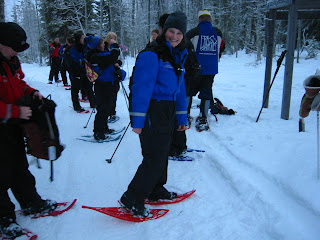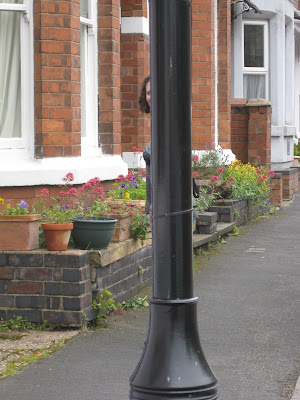 |
| Sissinghurst, Kent, June 2012 |
The Grand Round is the name for a series of lectures on Tuesday lunchtimes, where doctors have the opportunity to present an aspect of their work to other doctors, who can ask questions and generally expand their medical knowledge. All are welcome, and I went along after my outpatient clinic, because the host was one of the respiratory doctors, and a major part of my work is now on the respiratory wards. SOB, sputum and productive coughing, you remember.
[Note: I was hoping to win the Outpatient Clinic Award with a full house of nine patients in my morning clinic. When the first two didn't turn up and I only saw one patient in the first hour and a half it was clear there would be no medal for me. Then three patients arrived at exactly the same time...]
There are two parts to the Grand Round - a main presentation, and then a case study, which can be on a completely different subject. The main presentation on this occasion was about tuberculosis, and particularly its rise among the hospital population.
TB seems to be a condition that bears comparison with HIV infection in the 1980's. Sufferers are stigmatised, and the diagnosis is whispered rather than spoken out loud. Masks are worn in side rooms where patients are isolated for TB or suspected TB on my wards. During the recruitment process, there was great emphasis on ensuring that my TB immunity was up to date, and I had to have an additional blood test despite the clear evidence of the BCG vaccination scar.
It turns out, according to the doctor giving the presentation, that risks of infection on casual contact with an infected person are minimal, and rise only with prolonged close contact, in a family or workplace situation, for example. Perhaps this will be addressed one day in the same way that the status of HIV patients changed when Princess Diana shook hands with one without wearing gloves. Air travel is safe.
But there are risks, and the main issue with TB is drug resistance. The bacterium seems to be tricky to eliminate, and standard treatment with multiple antibiotics is unpleasant and prolonged, leading to low compliance and the emergence of resistant strains. Multiple drug resistance (MDR) is growing, and new categories of resistance have been defined. EDR TB is extensively drug resistant, where second line antibiotics have to be added on top of the first line treatment, and TDR TB is totally drug resistant to all first and second line treatments. Cases of TDR TB have been recorded in all countries that monitor cases of TB.
The 'good' news is that standard treatments for TB can take place in the community, with hospital admission only needed for MDR TB or where circumstances suggest that the patient will not comply fully with the six months of treatment required. Masks are only indicated where MDR TB is diagnosed or suspected, which is why I've had to grapple with how to put the blessed thing on - I'm pretty sure I've been wearing it upside down.
The main challenges include patient compliance with lengthy treatment. A few patients need Directly Observed Therapy to ensure that they complete the full course and don't contribute to the drug resistance problem by stopping the medications and allowing the more resistant strains of bacteria to survive. Observing patients taking their drugs is obviously entirely possible, but keeping a patient occupying a hospital bed purely to ensure compliance is an expensive way to manage a disease. Another challenging issue is how to deal with family and workplace contacts who may have the latent or overt disease. Clearly close family living in the same house should be investigated, but what about co-workers? Or the extended family who may have visited or hosted the infected person? Or fellow commuters who travel on the same bus or train every day?
And lastly, what are we to do with Total Drug Resistant TB? Even the specialists don't know. That session ended on a downbeat, with the answer to the question "Can TB be eradicated from the globe?" being an emphatic "No." It is a growing menace in some parts of the world, particularly the former states of the USSR and the Indian subcontinent.
It was an interesting talk, and given that it was non-technical I was able to follow the arguments pretty well, although details of the antibiotics used in treatment passed over my head. The case study that followed was a different story. It was about a man in his early 30's admitted to hospital with shortness of breath and little previous medical history to raise any specific concerns. It felt a bit like a pub quiz for doctors - "Name That Medical Condition Based on These Observations," especially as the presenter went through it bit by bit, pausing to ask the audience what they would have done at various stages. I think dad would have enjoyed it.
My all-time favourite doctor had come into the lecture theatre half-way through the first presentation. He's still the only consultant who has asked my name and background, has held an ordinary conversation with me on the wards, and acknowledges my existence when occasionally meeting in the hospital corridors. For that, he has my eternal gratitude, and come to think of it, my respect. Anyway, he sat next to me, and was one of the few to actually respond from the audience with some ideas about what the diagnosis might be for the patient in the case study. We'd got as far as presentation at A&E and a preliminary X-ray with some clouding in the lungs when the audience was first asked for its opinion, and at this early stage my favourite doctor offered up 'pulmonary embolism' (i.e. a blood clot in the lung).
The case study progressed, and I sank further and further out of my depth, with abbreviations, ECG plots, blood gas saturation figures and respiratory rates (and that's just the things I know the names of). The ECG was particularly amusing, as I sat there looking at some squiggly lines, presuming that everyone else in the room knew what on earth was meant when the presenter described some of their features. I did cotton on that when oxygen saturation of the blood decreased despite the patient being given oxygen, things were not going well. The key diagnostic that was eventually carried out was a CTPA (
pulmonary angiogram = imaging of the blood vessels in the lung), which (apparently) revealed a load of blood clots in interesting places. I looked at the images on the screen, and had to take their word for it. Pulmonary embolism it was, thrombolysis ('clot-busting') drugs were administered, and the patient lived to tell the tale.
"A lucky guess," murmured my favourite doctor as we stood up to leave. But I like to think he's pretty smart really.












